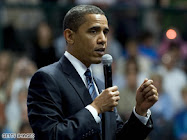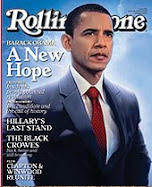| |
Madness and Shame
You want a scary thought? Imagine a fanatic in the mold of Dick Cheney but without the vice president’s sense of humor.
In her important new book, “The Dark Side: The Inside Story of How the War on Terror Turned Into a War on American Ideals,” Jane Mayer of The New Yorker devotes a great deal of space to David Addington, Dick Cheney’s main man and the lead architect of the Bush administration’s legal strategy for the so-called war on terror.
She quotes a colleague as saying of Mr. Addington: “No one stood to his right.” Colin Powell, a veteran of many bruising battles with Mr. Cheney, was reported to have summed up Mr. Addington as follows: “He doesn’t believe in the Constitution.”
Very few voters are aware of Mr. Addington’s existence, much less what he stands for. But he was the legal linchpin of the administration’s Marquis de Sade approach to battling terrorism. In the view of Mr. Addington and his acolytes, anything and everything that the president authorized in the fight against terror — regardless of what the Constitution or Congress or the Geneva Conventions might say — was all right. That included torture, rendition, warrantless wiretapping, the suspension of habeas corpus, you name it.
This is the mind-set that gave us Abu Ghraib, Guantánamo and the C.I.A.’s secret prisons, known as “black sites.”
Ms. Mayer wrote: “The legal doctrine that Addington espoused — that the president, as commander in chief, had the authority to disregard virtually all previously known legal boundaries if national security demanded it — rested on a reading of the Constitution that few legal scholars shared.”
When the constraints of the law are unlocked by the men and women in suits at the pinnacle of power, terrible things happen in the real world. You end up with detainees being physically and psychologically tormented day after day, month after month, until they beg to be allowed to commit suicide. You have prisoners beaten until they are on the verge of death, or hooked to overhead manacles like something out of the Inquisition, or forced to defecate on themselves, or sexually humiliated, or driven crazy by days on end of sleep deprivation and blinding lights and blaring noises, or water-boarded.
To get a sense of the heights of madness scaled in this anything-goes atmosphere, consider a brainstorming meeting held by military officials at Guantánamo. Ms. Mayer said the meeting was called to come up with ways to crack through the resistance of detainees.
“One source of ideas,” she wrote, “was the popular television show ‘24.’ On that show as Ms. Mayer noted, “torture always worked. It saved America on a weekly basis.”
I felt as if I was in Never-Never Land as I read: “In conversation with British human rights lawyer Philippe Sands, the top military lawyer in Guantánamo, Diane Beaver, said quite earnestly that Jack Bauer ‘gave people lots of ideas’ as they sought for interrogation models.”
Donald Rumsfeld described the detainees at Guantánamo as “the worst of the worst.” A more sober assessment has since been reached by many respected observers. Ms. Mayer mentioned a study conducted by attorneys and law students at the Seton Hall University Law School.
“After reviewing 517 of the Guantánamo detainees’ cases in depth,” she said, “they concluded that only 8 percent were alleged to have associated with Al Qaeda. Fifty-five percent were not alleged to have engaged in any hostile act against the United States at all, and the remainder were charged with dubious wrongdoing, including having tried to flee U.S. bombs. The overwhelming majority — all but 5 percent — had been captured by non-U.S. players, many of whom were bounty hunters.”
The U.S. shamed itself on George W. Bush’s and Dick Cheney’s watch, and David Addington and others like him were willing to manipulate the law like Silly Putty to give them the legal cover they desired. Ms. Mayer noted that Arthur Schlesinger Jr., the late historian, believed that “the Bush administration’s extralegal counterterrorism program presented the most dramatic, sustained and radical challenge to the rule of law in American history.”
After reflecting on major breakdowns of law that occurred in prior administrations, including the Watergate disaster, Mr. Schlesinger told Ms. Mayer: “No position taken has done more damage to the American reputation in the world — ever.”
Americans still have not come to grips with this disastrous stain on the nation’s soul. It’s important that the whole truth eventually come out, and as many of the wrongs as possible be rectified.
Ms. Mayer, as much as anyone, is doing her part to pull back the curtain on the awful reality. “The Dark Side” is essential reading for those who think they can stand the truth.

























No comments:
Post a Comment